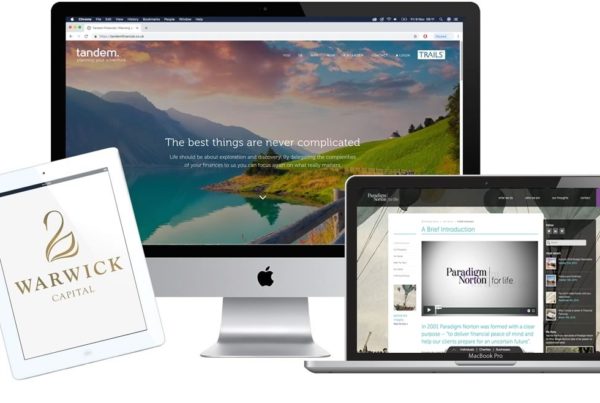
Many variables are at play when it comes to the success or failure of your digital campaigns. Yet few are as important for financial websites as call-to-actions (CTAs).
We encounter CTAs all the time online, and seldom notice them. Yet this isn’t to say they do not matter. Financial websites need to use them strategically and effectively, in order to drive the desired action from their users and target audience.
In this article, we will expand on how CTAs operate to generate engagement and leads. We’ll then take a show you the crucial steps you need to follow to create CTAs which produce tangible results.
What Are CTAs?
Call to actions are short phrases, often encapsulated within buttons, which direct your audience towards an immediate action.
CTAs also frequently take the form of images and clickable text, which invite users to follow the path you’ve set before them. This path might lead them to download an eBook or whitepaper, fill out your contact form or phone to book an appointment.
It’s a relatively simple and powerful concept, yet CTAs are often overlooked by financial websites. They have a direct impact on the success of your digital marketing campaigns.
Indeed, the content of your financial website should be doing all of the essential, preparatory work to entice users into taking that final step asked for by your call-to-action.
How To Master CTAs For Financial Websites
CTAs might sound easy to create and implement, but a lot of skill and work is involved to make them work well. Think about it. How many banner ads and pop ups scream for your attention as you surf the web. Chances are, you ignore a lot of them. Yet others you will probably click on.
What are the factors which lead you to follow some CTAs, and ignore others? How can you create powerful CTAs for your financial website, which actually produces the action you want?
#1 Understand Your Goals
This runs to the core of what financial websites are for, fundamentally. What do you want out of your financial website? What do you want it to achieve?
Answering these kinds of questions will help you ascertain the kinds of CTAs appropriate for your financial website, and how you should use them.
If, for instance, the purpose of your financial website is primarily to increase awareness of your brand, then CTAs like “follow us” or “sign up to our blog” might be higher up the list of possible options.
On the other hand, if the primary purpose of your online content is to generate new clients (perhaps by getting users to book an appointment), then CTAs like “book a free consultation” or “schedule an appointment” are probably more appropriate.
Most of the time, financial websites are trying to achieve multiple purposes. Indeed, it might be that the main goal is to generate new clients, whilst the secondary goal is to increase exposure of the brand online to defined, digital audiences.
In these cases, you need to be careful to prioritise your goals and your CTAs accordingly. It can work to have more than one CTA on a web page or Facebook post (e.g. “book a meeting” and “download our report”), but this can easily confuse users and actually then decrease your conversion rate.
#2 Know Your Audience’s Wants & Needs
It’s great when financial websites have their digital goals clearly defined. Yet this will only get you so far if you fail to consider your audience’s needs, desires, fears and aspirations.
Why are people on your website? What sorts of questions do they have, and what answers are they hoping to find? What kind of content, vocabulary and tone of voice is most likely to appeal to them and engage them?
At this point, it certainly helps if owners of financial websites actually sit down and conduct some research into their “buyer personas.” This refers to the profile of their current audience, as well as the audience they wish to engage with (the two are not always the same).
Once you answer these kinds of questions about your audience, it will become clearer which kinds of CTAs will connect more powerfully with them, and what tone of voice is required.
It can help to look at the kinds of CTAs your competitors are using, but do not simply copy them. Quite often, they will be doing it wrong. Yet that’s not to say they don’t have some good ideas you might be able to draw inspiration from.
#3 Get The Placement Right
Financial websites need to clearly display their CTAs where their users can see them. It would be a shame if after all this work, your CTAs are obscured and never noticed.
To ensure strong exposure on your content for your CTAs, here are some tips:
- Make the CTA stand out through strategic use of your colour palette. Obviously, you do not want to blind your users with something horrendously bright, or put them off with something garish or which conflicts with your brand’s colour scheme. Yet a contrast in colour on the CTA can be a really powerful way to make it stand out, and draw attention to it.
- Use size appropriately and strategically. Financial websites should not have huge, glaring CTAs everywhere, which interrupts the user experience. Yet it does not help to have a tiny CTA which is barely distinguishable. Find a good size balance where the user feels able to enjoy your content, yet they are able to clearly ascertain the next steps you want them to take.
- Find the right location. The key thing here for financial websites is to ensure CTAs are placed in prominent areas within your content. Try and keep them away from surrounding clutter, and do not assume that they should just go at the top of the web page. Often, they work well towards the end of a blog or piece of content, once the user has had their appetite whet to find out more.
For more tips on how to get the most out of CTAs for financial websites, check out this great video by Moz from their amazing Whiteboard Fridays.








